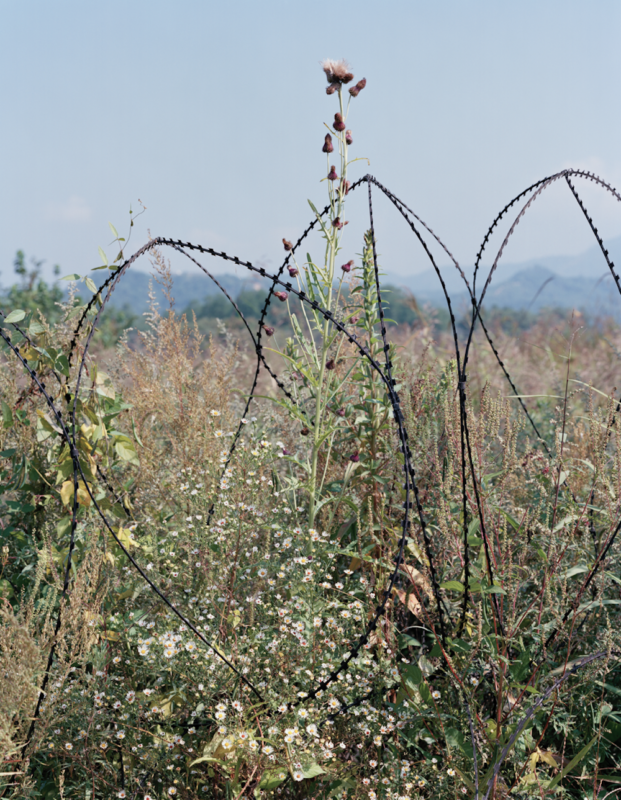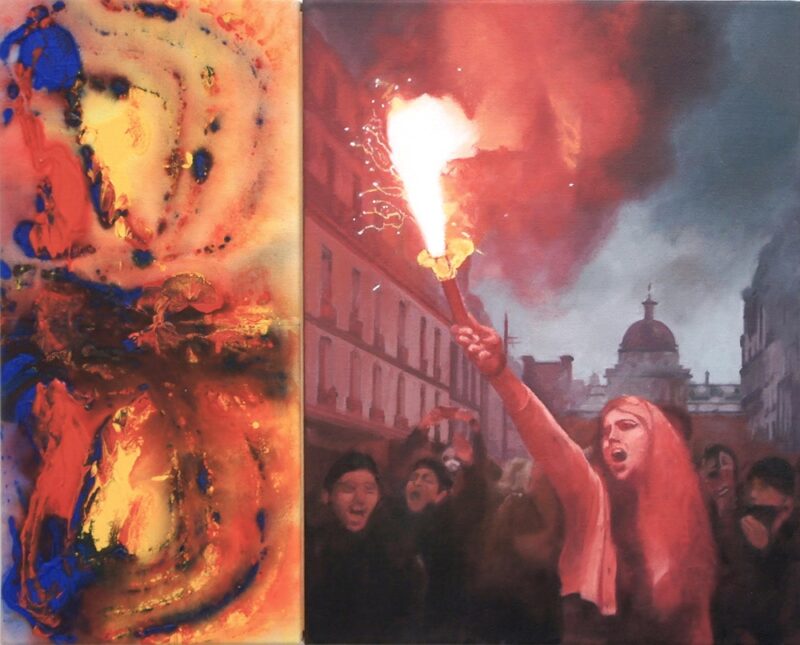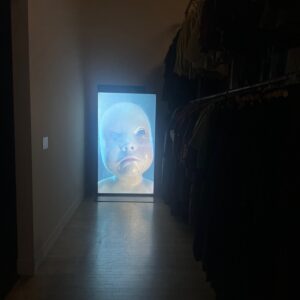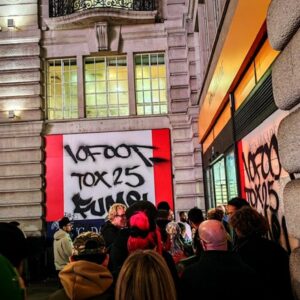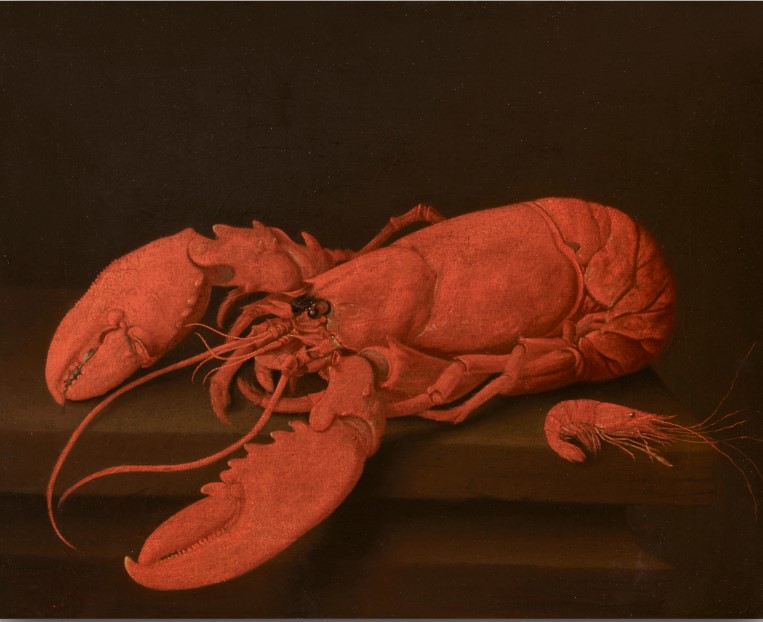
Frieze Masters (to 15 Oct, viewing rooms online to 18 Oct) may have plenty of relatively familiar types of work by well-established artists, but there is also plenty to discover. Here are some works which surprised me in one way or another. Less of a surprise, yet curious, was that Gagosian – which had the worst stand at Frieze London – had quite possibly had the best stand at Masters, an extensive presentation of Franz West’s works on paper.
Charles Collins: ‘A Still Life of Lobster and Shrimp’ c 1730 at Rafael Valls, London (top)
Charles Collins (1680 -1744) was a leading Irish painter of birds, game, fowl and other animals. Here there’s a certain charm beyond the genre norms in the interplay of lobster and prawn – both as contrastingly-scaled creatures from the same zone, and as abstract shapes.
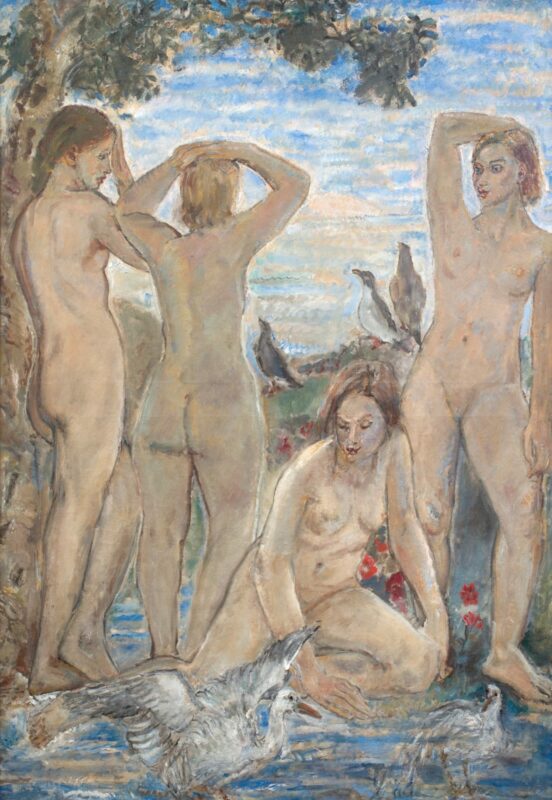
Ethel Walker: ‘Decoration: Evening’, 1933-36 – Oil on canvas, 188 x 127 cm at Piano Nobile, London
Nowadays Dame Ethel Walker (1861–1951) is the least-known of the four women artists to be awarded a damehood in the twentieth century, though she enjoyed an international reputation during her lifetime. Walker’s primary subject – from a queer perspective which may have contributed to both her previously low profile and her current resurgence, including a room at Tate Britain – was other women. In this ‘decoration’ (thought of as functioning as a mural) the active engagement with birds is an unusual and appealing feature. Bonus points if you got the other dames: Knight, Hepworth and Frink.
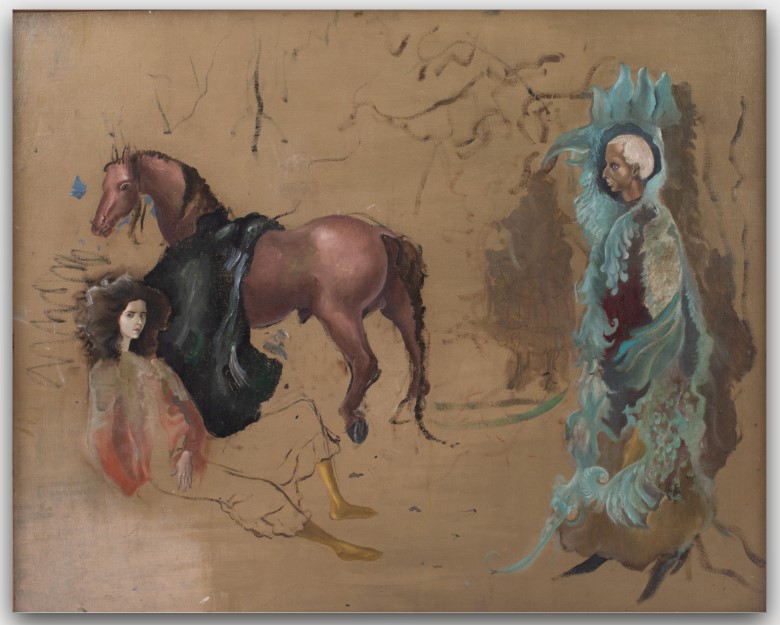
Leonora Carrington: ‘Double Portrait’ 1937-1940 – Oil on canvas, 65 x 82 cm at Gallery Wendi Norris, San Francisco
This attractively unfinished painting is thought to be the only one to show Leonora Carrington (1917-2011) and Max Ernst (who owned it) together. Ernst, her lover during 1937-39, is cast as a water-cloaked version of tarot character The Hermit, as an esoteric archetype of change and potential in her life. Could that also be Carrington’s own horse? She grew up in the countryside and rode regularly, so it’s feasible.
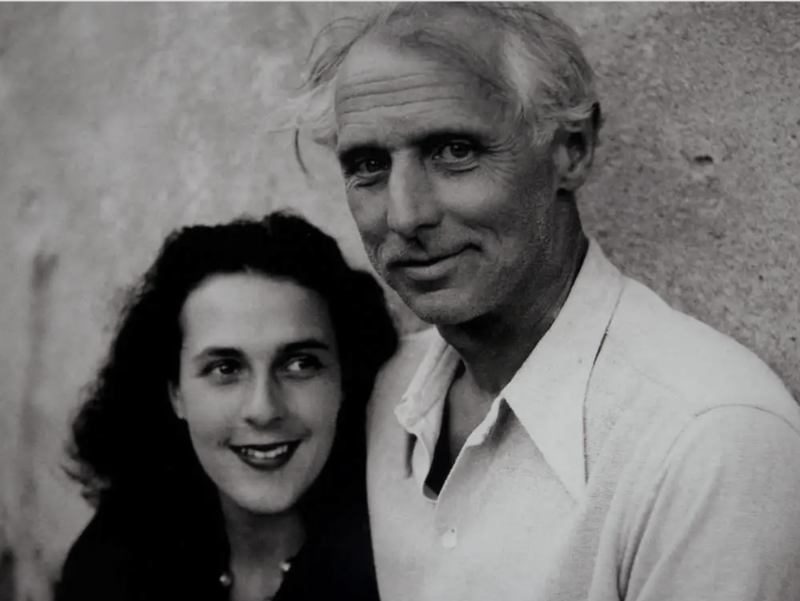
Leonora Carrington and Max Ernst, photographed by Lee Miller, c.1939

Keith Sonnier: ‘Dyad Tuck’, 1968 – Aluminium, screen, latex, flocking, wood, 68 x 51 cm at Galerie Mitterrand, Paris
This seductive use of unusual materials to generating an internal space immediately precedes Keith Sonnier (1941-2020) moving on to his better-known works using neon. The title implies two parts, perhaps referring to the symmetry which also suggests a face.
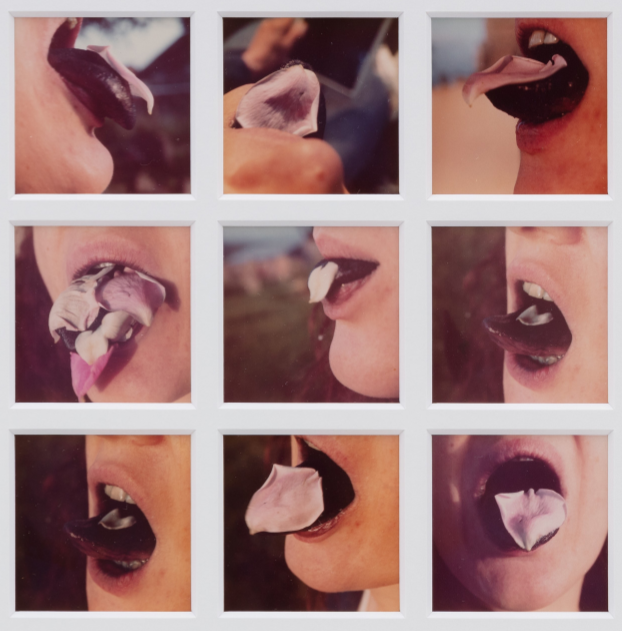
Rose Finn-Kelcey: ‘Restored to her natural state by nibbling rose petals (preparatory study) ’ c. 1977 – nine colour photographs at Kate MacGarry, London
These previously unknown images were discovered only after Rose Finn-Kelcey’s death in 2014. She blackened her lips for work which recalls her Catholic upbringing through its reference to transubstantiation, though in this case the change sought is evidently more personal, the means of it as mysterious as religion.
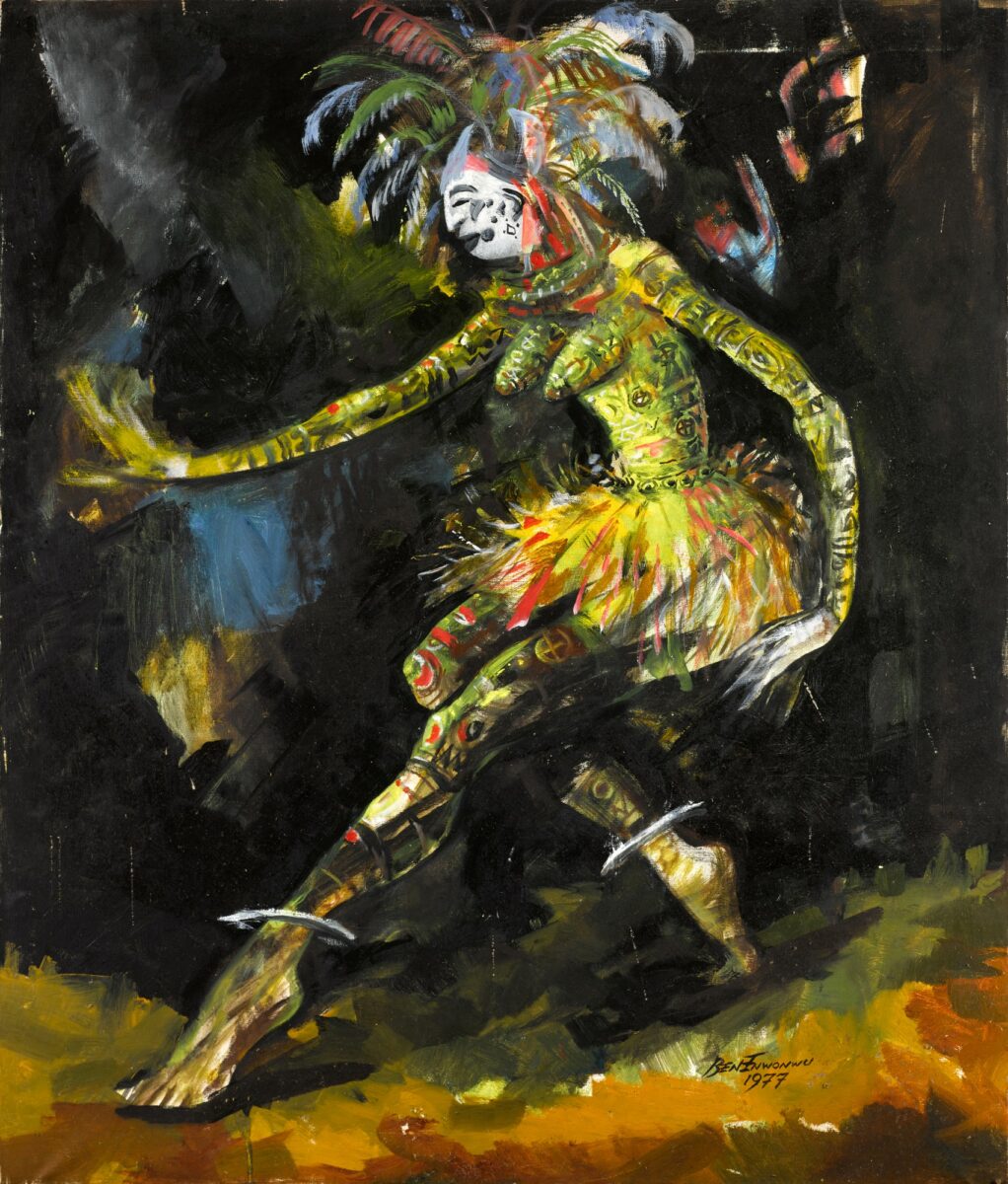
Benedict Chukwukadibi Enwonwu: ‘Agbogho Mmuo’ 1977 – Oil on canvas, 98 cm x 82 cm at Kó, Lagos
The surprise here is that this shows a man: he’s taking part as a ‘Maiden Spirit’ (Agbogho Mmuo) in a masquerade dance performed by young men in Igbo communities, paying homage to unmarried girls and ancestors. The elaborate costume includes mask, gloves and imitation breasts. The masquerade tradition took on new symbolism, picked up on by Enwonwu, in the wake of the Nigerian Civil War of 1967-1970, as the Igbo people incorporated their culture into a re-united Nigeria.
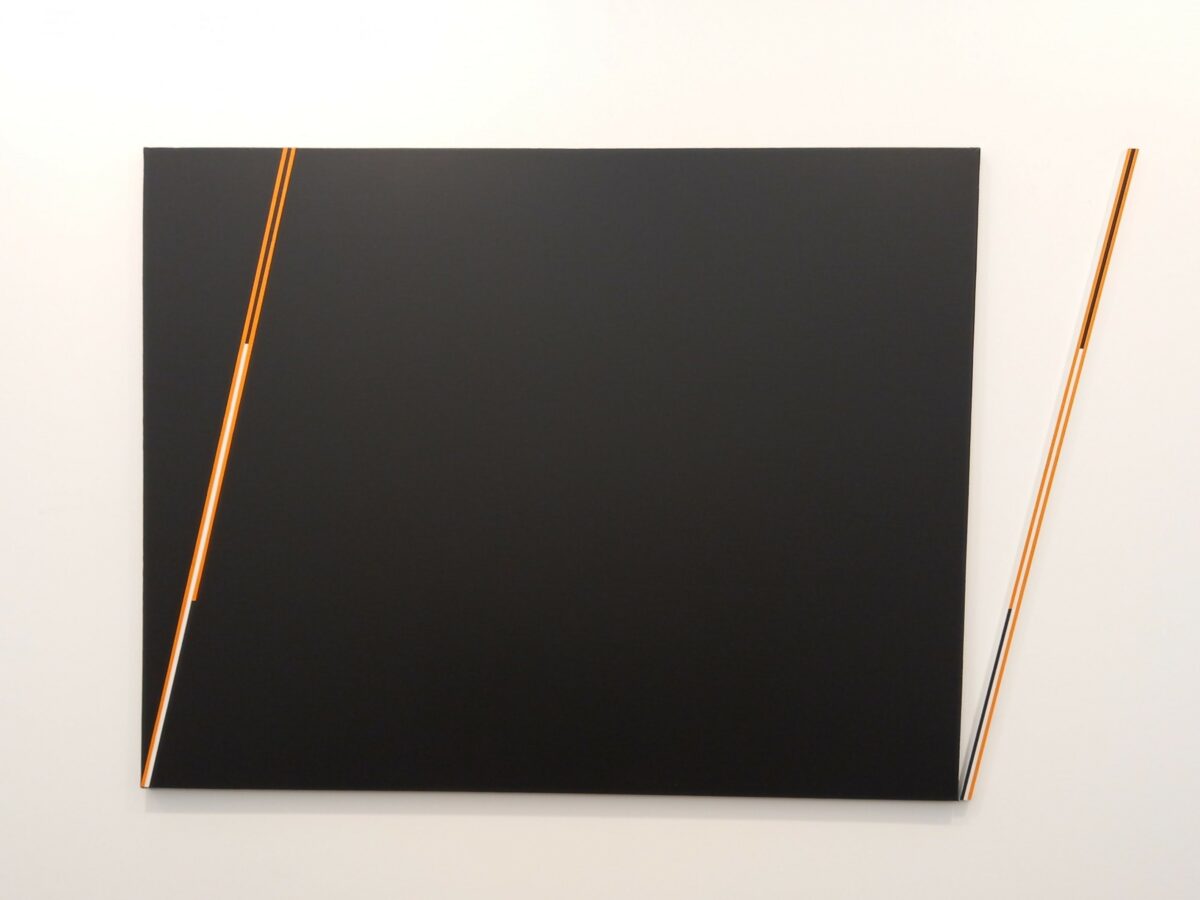
Mehdi Moutashar: ‘Two rectangles, one rotated by 15°’ 1979 – Acrylic on canvas and painted aluminium, 114 cm x 173.5 cm x 2 cm, at Lawrie Shabibi, Dubai
This is a transitional work between the Iranian artist’s 2D investigations of rotating patterns and squares and his later three-dimensional paintings. Moutashar made just five works playing like this on the apparent departure of an aluminium element from the canvas.
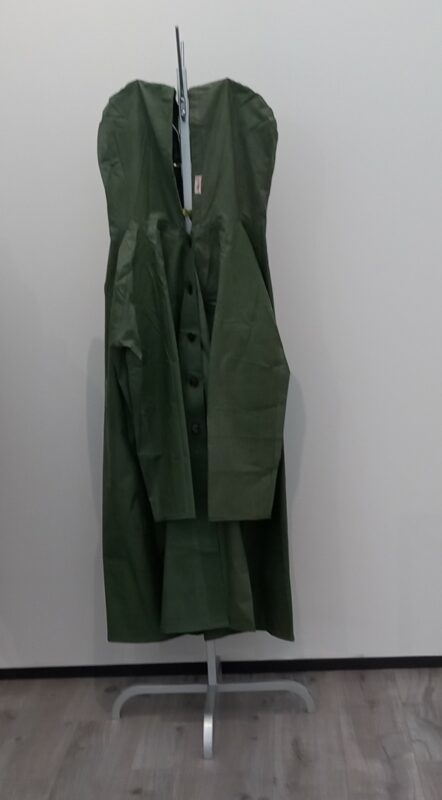
Ai Weiwei: ‘Two Raincoats’, 1988 – Raincoats and coat hanger, at Galleria Continua, San Gimignano / Paris
In his New York years (1983-93) Ai Weiwei was in thrall to Duchamp, and that’s evident here: a clothes hanger (referencing Duchamp’s ‘Trap’ 1917) combines with two coats to make an assisted readymade. The twist is that two people become one through how the coats are hung: that might pick up on the sexual subtext of ‘Trap’, in which the floor-based coat hooks have a phallic aspect.
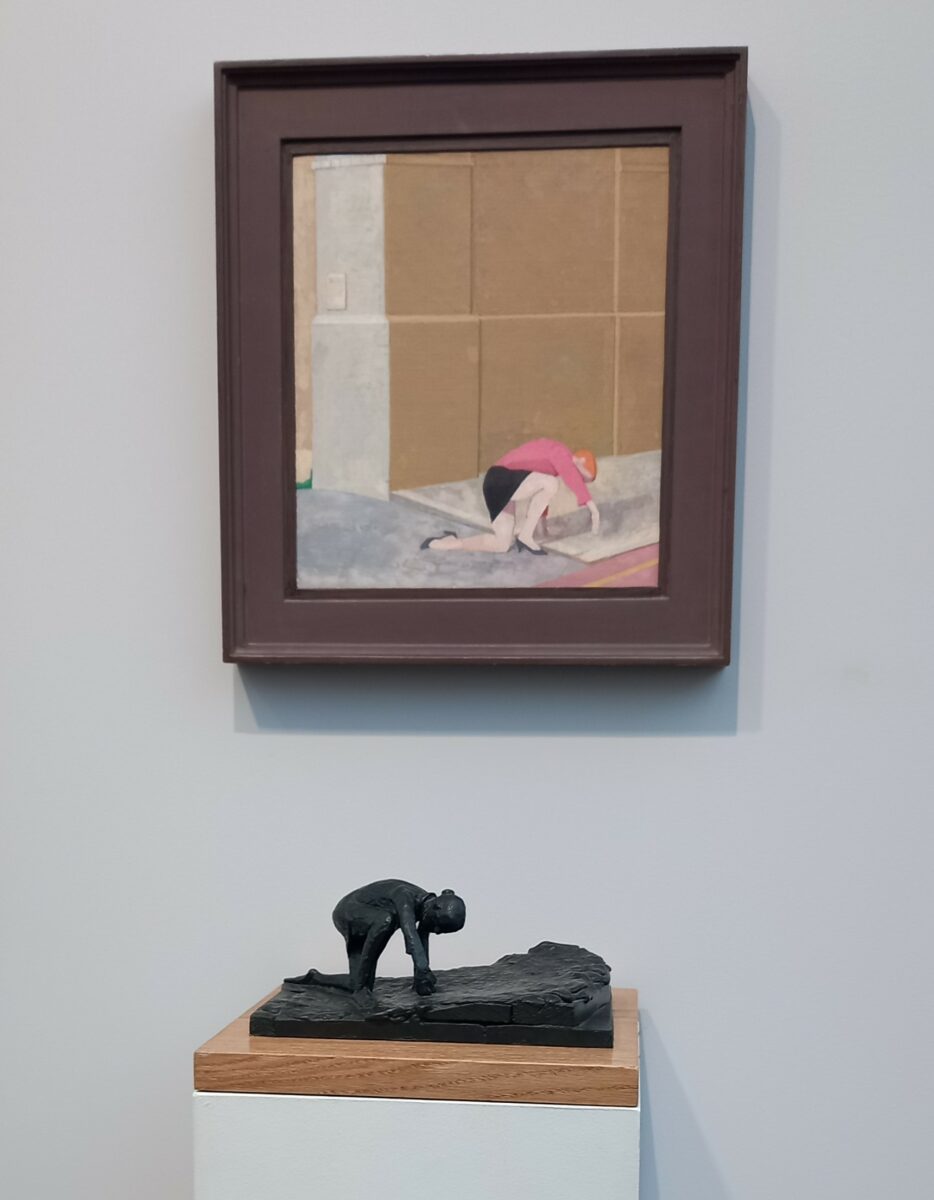
Euan Uglow: ‘Girl Tripping’ 1991-2 – oil on canvas and bronze at Hazlitt Holland-Hibbert, London
Euan Uglow (1932-2000) often made plaster maquettes as a means of exploring the figures he was painting, but this is one of only two that he subsequently cast. The location and subject are also unusual: a girl in a pink jumper who tripped just outside his studio: remembering that, he recreated the scene with a model in his more usual location – actually in the studio.
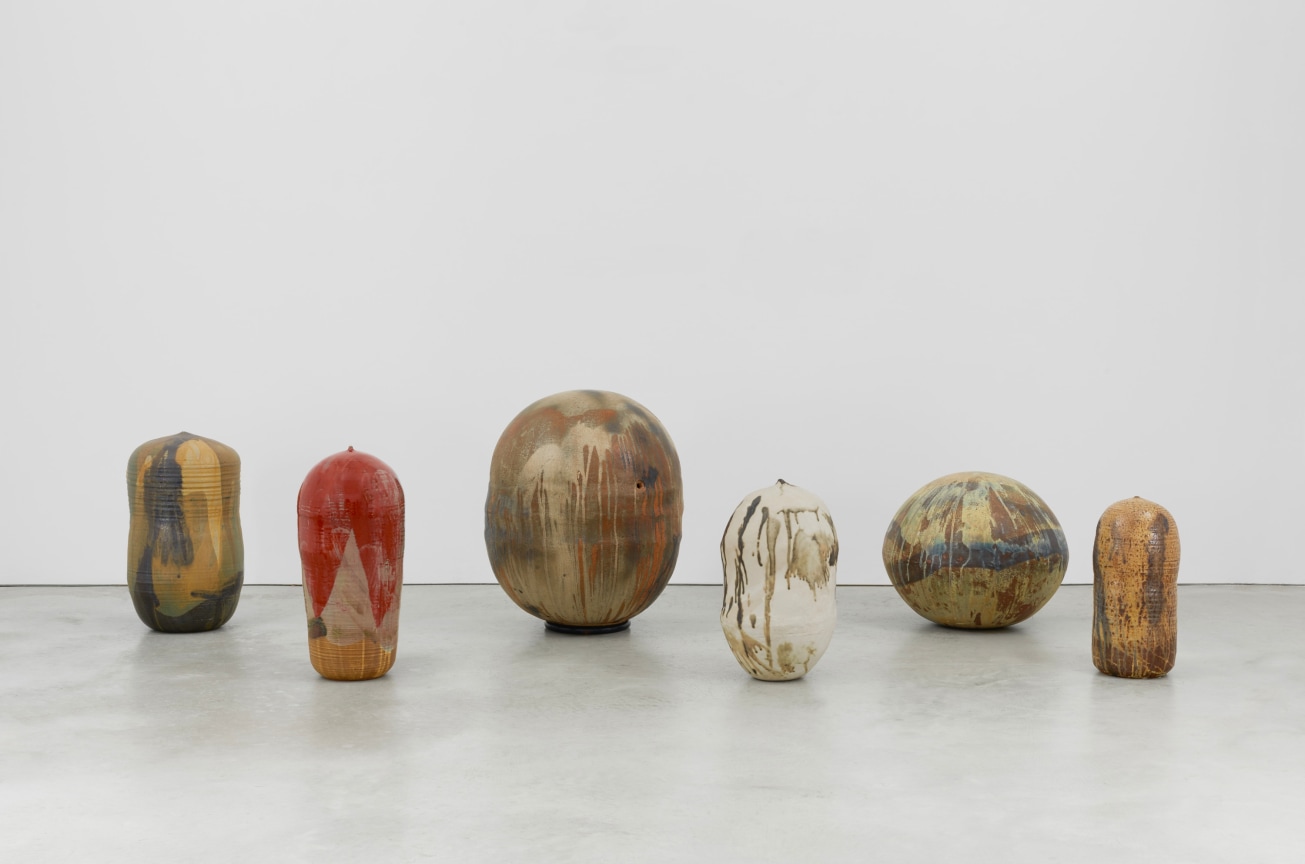
Toshiko Takaezu: glazed porcelain works at James Cohan, New York
Over a five decade career influenced by Abstract Expressionism and the traditions of East Asia, Toshiko Takaezu (1922-2011) often made what look like vases, rendered dysfunctional by their closure aside from one small hole to prevent explosion in the kiln – leaving them somewhere between pottery, sculpture and painting.
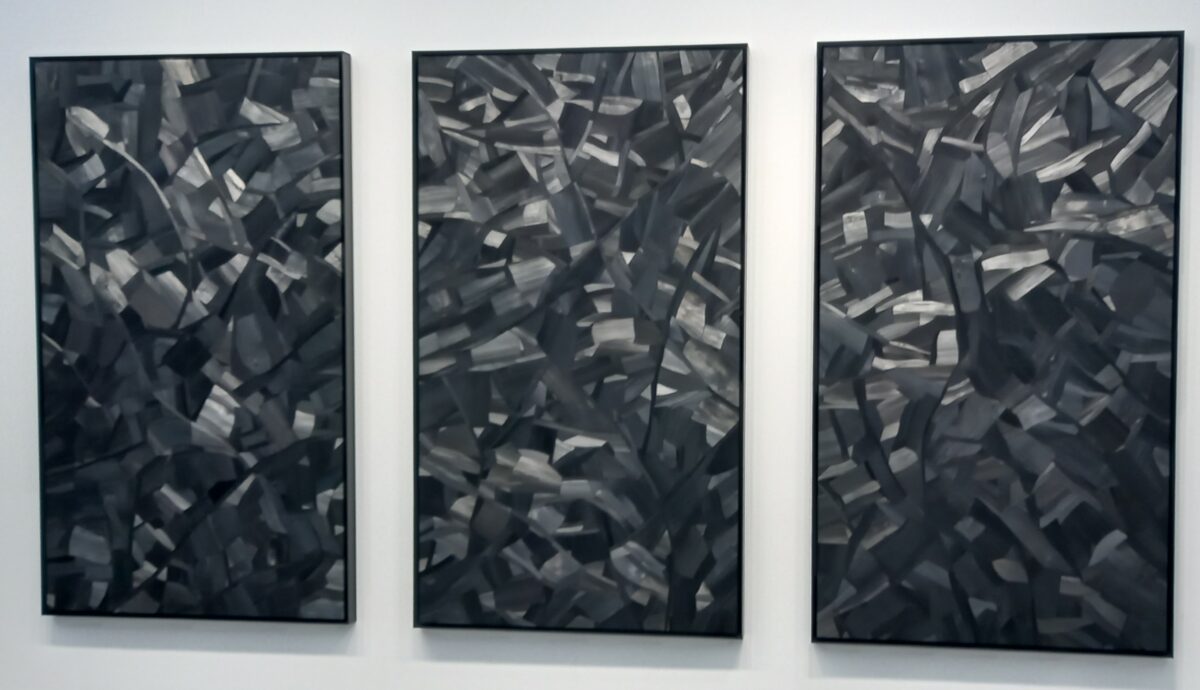
Lee Bae: Three works (1999) from the series ‘Issu du feu’ – Charcoal on canvas, each 210 x 120 cm at Johyun Gallery, Busan, Korea
Seoul / Paris based Lee Bae focuses on the expressive potential of charcoal as a medium as what has been called ‘a formal and immersive journey into the abysses of blackness’. Here raw charcoal makes up a mosaic-like assemblages which must take some fitting together to evoke its origins in fire.

